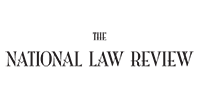 Energy storage has frequently been cited as the critical missing link in an electric infrastructure designed to maximize the benefits of cheap, renewable energy. Because energy from the sun and the wind is inherently intermittent, it has not been able to satisfy a round-the-clock need for electricity. And in many places we’ve built more renewable capacity than we can use, when the sun is shining, or when the wind is blowing. For example, in sun-soaked California and the West, electric grid operators have recently been confronted by the challenge of “over-generation” during peak solar hours of the day, which can result in the curtailment of solar generation to avoid overloading the grid with electrons. Similarly, in Texas, so much wind blows at night that the electricity off-takers can sometimes get paid through “negative” power prices to use the wind power.
Energy storage has frequently been cited as the critical missing link in an electric infrastructure designed to maximize the benefits of cheap, renewable energy. Because energy from the sun and the wind is inherently intermittent, it has not been able to satisfy a round-the-clock need for electricity. And in many places we’ve built more renewable capacity than we can use, when the sun is shining, or when the wind is blowing. For example, in sun-soaked California and the West, electric grid operators have recently been confronted by the challenge of “over-generation” during peak solar hours of the day, which can result in the curtailment of solar generation to avoid overloading the grid with electrons. Similarly, in Texas, so much wind blows at night that the electricity off-takers can sometimes get paid through “negative” power prices to use the wind power.
For California, a state that has set its electric grid on a path toward 50% renewable by 2030 (SB 350 (De León)), and one that is considering a 100% RPS by 2045 (SB 100(De León)), the question of energy storage has taken on a practical significance. And regulators at the federal and state level have been quite busy taking down barriers that have made the increased adoption of energy storage resources impracticable.
Today Bud Earley of Covington blogged about the recent approval at the Federal Energy Regulatory Commission (FERC) of its 2017 electric storage rulemaking. That rule set out broad market criteria for the participation of energy storage resources in regional electricity markets, and left the question of distributed energy resources (DERs), for a later date.
Given its innovative policy work on both fronts, California is a natural market to look to for policy models that may be relevant beyond the California ISO (CAISO). In California, state regulators have already begun seeking comment and setting rules for the participation of both DERs and energy storage in the market. The CAISO has begun, for example, reviewing applications from some companies, including investor-owned utility companies, to seek approval as distributed energy resource providers (DERPs); and the CAISO has sought and received approval from FERC to seek tariff proposals that allow DERPs to aggregate and sell resources in the grid. And with respect to energy storage, the state regulator — the California Public Utilities Commission (CPUC) — recently issued a decision for new “multiple-use” applications for energy storage, which allow storage providers to “stack” various services.

Recent Comments